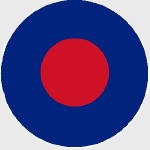Forces of Valor FOV821003A No.7 Squadron, BRITFORLEB Task Force, Lebanon 1984
"The Chinook is an awesome aviation airframe. It is able to lift single heavy-duty pieces of equipment and light vehicles and is one of the most reliable airframes in service in the entire United States Military. It can lift up to 50,000 pounds and nearly 26,000 can be slung below the helicopter from the center hook. It has redundancy built in that many people do not even realize, which makes it a very safe airframe. Each of the huge rotor blades on the Chinook CH-47 weighs 350 pounds, and the engines work together to turn the rotors. Each of the engines work about 50 percent capacity, if one engine fails the other simply goes into high gear, and functions at 100 percent allowing the helicopter to fly just as well as it does with two engines."
- Military.com
 The CH-47 is a twin-engine, tandem rotor helicopter designed for transportation of cargo, troops, and weapons during day, night, visual, and instrument conditions. Development of the medium lift Boeing Vertol (models 114 and 414) CH-47 Series Chinook began in 1956. Since then the effectiveness of the Chinook has been continually upgraded by successive product improvements, the CH-47A, CH-47B, CH-47C, and CH-47D. The amount of load a cargo helicopter can carry depends on the model, the fuel on board, the distance to be flown, and atmospheric conditions.
The CH-47 is a twin-engine, tandem rotor helicopter designed for transportation of cargo, troops, and weapons during day, night, visual, and instrument conditions. Development of the medium lift Boeing Vertol (models 114 and 414) CH-47 Series Chinook began in 1956. Since then the effectiveness of the Chinook has been continually upgraded by successive product improvements, the CH-47A, CH-47B, CH-47C, and CH-47D. The amount of load a cargo helicopter can carry depends on the model, the fuel on board, the distance to be flown, and atmospheric conditions.
The CH-47D shares the same airframe as earlier models, the main difference being the adoption of more powerful engines. Early CH-47Ds were originally powered by two T55-L-712 engines, the most common engine is the later T55-GA-714A. With its triple-hook cargo system, the CH-47D can carry heavy payloads internally and up to 26,000 pounds (12 t) (such as 40-foot or 12-metre containers) externally. It was first introduced into service in 1979. In air assault operations, it often serves as the principal mover of the 155 mm M198 howitzer, accompanying 30 rounds of ammunition, and an 11-man crew. The CH-47D also has advanced avionics, such as the Global Positioning System. Nearly all US Army CH-47D were conversions from previous A, B, and C models, a total of 472 being converted. The last U.S. Army CH-47D built was delivered to the U.S. Army Reserve, located at Fort Hood, Texas, in 2002.
The Netherlands acquired all seven of the Canadian Forces' surviving CH-147s and upgraded them to CH-47D standard. Six more new-build CH-47Ds were delivered in 1995 for a total of 13. The Dutch CH-47Ds feature a number of improvements over U.S. Army CH-47Ds, including a long nose for Bendix weather radar, a "glass cockpit", and improved T55-L-714 engines. As of 2011, the Netherlands shall upgrade 11 of these which will be updated to the CH-47F standard at a later date. As of 2011, Singapore has 18 CH-47D/SDs, which includes twelve "Super D" Chinooks, in service. In 2008, Canada purchased 6 CH-47Ds from the U.S. for the Canadian Helicopter Force Afghanistan for $252 million. With 1 CH-47D loss, the remaining 5 CH-47D were returned by Canada in 2011 after their mission in Afghanistan was over.
Pictured here is a 1:72 scale replica of a RAF Boeing-Vertol HC.Mk 1 Chinook helicopter that was attached to No.7 Squadron, then participating in BRITFORLEB, Great Britain's peacekeeping effort in Lebanon during 1984.
Now in stock!
Dimensions:
Length: 9-inches
Rotorspan: 10-inches
Release Date: April 2023
Historical Account: "BRITFORLEB" - The Multinational Force in Lebanon (MNF) was an international peacekeeping force created in August 1982 following a 1981 U.S.-brokered ceasefire between the Palestine Liberation Organization (PLO) and Israel to end their involvement in the conflict between Lebanon's pro-government and pro-Syrian factions. The ceasefire held until June 3rd, 1982 when the Abu Nidal Organization attempted to assassinate Shlomo Argov, Israel's ambassador to London. Israel blamed the PLO and three days later invaded Lebanon. West Beirut was besieged for seven weeks before the PLO acceded to a new agreement for their withdrawal. The agreement provided for the deployment of a Multinational Force to assist the Lebanese Armed Forces in evacuating the PLO, Syrian forces and other foreign combatants involved in Lebanon's civil war.
The involvement of British forces in the Multinational Force was agreed by the UK Government on December 15th, 1982. The American request for UK military support posed a dilemma for Prime Minister Margaret Thatcher who was wary of entanglement in the complex conflict in Lebanon. However, she agreed to a small, limited commitment as a token effort to support the UK-US 'special relationship'. The contingent of BRITFORLEB, codenamed Operation Hyperion, was limited to an armored reconnaissance squadron equipped with Ferret armored cars with, at most, 115 deployed personnel. British Forces were based in the East Beirut district of Regie Hadath. The contingent did not suffer any fatalities and was withdrawn, with the other multinational contingents, in February 1984. BRITFORLEB consisted of three squadron-sized rotations from armored reconnaissance units: C Sqn (Feb-Aug 1983) and A Sqn (Aug-Dec 1983) from the 1st Queens Dragoon Guards, and A Sqn (Dec 1983-Feb 1984) of the 16th/5th The Queen's Royal Lancers.


